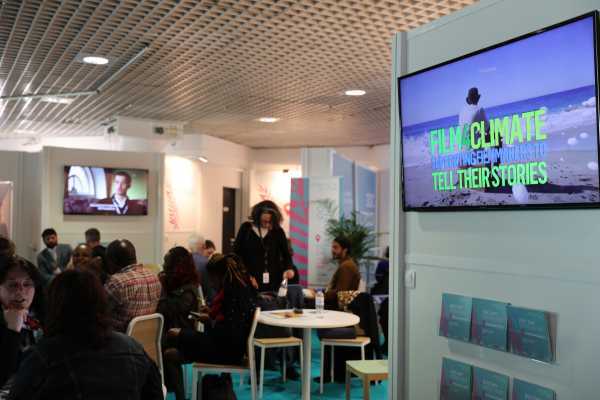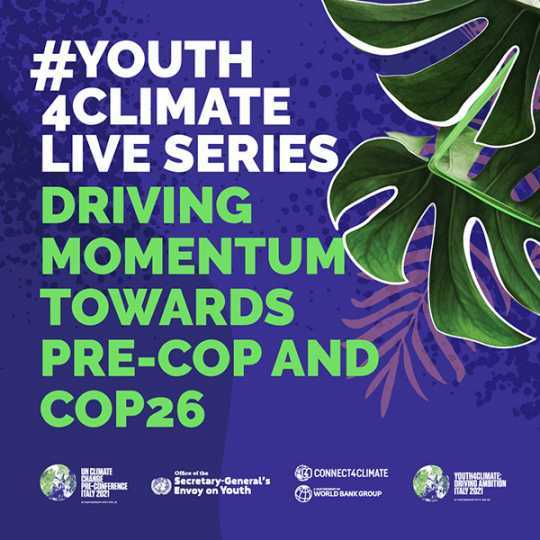This Charter represents a commitment to eliminate the negative environmental and communal impacts of visual media productions and to strongly advocate for the adoption of industry-wide incentives that will encourage sustainable practices including, but not limited to, the conservation of natural resources, the reduction of carbon emissions, the recycling of sets and location waste, and the promotion of environmental literacy.

Over time, climate change is contributing to issues around the world like hunger from failed crops and displaced families from flooding. Cutting emissions and preserving resources while we can is the only way to stall these problems. While we need major companies in energy and mining to make changes to reduce the amount of carbon we put out, there are also changes individuals can make to live greener, healthier lives. Consider these simple suggestions!

Photo by Bibhukalyan Acharya from Pexels
Watch Your Water
Parts of the United States and many other regions of the world are now facing extreme droughts and concerns of unsustainable water rationing. Even if you live somewhere that's not experiencing shortages, reducing water waste today can help prepare your family for drought response actions tomorrow and will free up water for others who might have urgent need of it. Conserving this precious resource also helps curb the climate change that's contributing to these droughts: the less water you waste, the less energy needs to be burned on water treatment, cutting down on carbon emissions.
A great way to reduce water waste is through rainwater collection. Saving rainwater provides you with extra stores you can use to water plants, refill fountains, wash cars, do laundry, or use for whatever other irrigation needs you have. Saving rainwater can reduce a home’s water requirements by as much as 70 percent. If hot water systems are supplied with rainwater, that reduction can increase to as much as 85 percent.
If rainwater collection isn’t an option, or if you’d just like to focus on your tap water use for now, Prestige Plumbing points out that low-flow faucets and toilets can be a boon. They save water, energy and money, and ultimately can help save our planet.
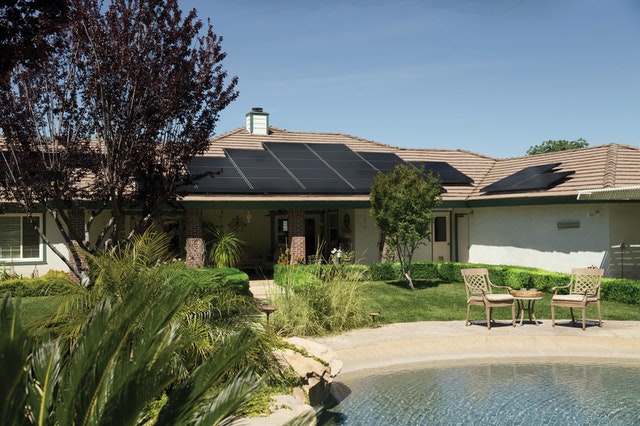
Photo by Vivint Solar from Pexels
Install Solar Panels
If paying your electricity bill eats a huge chunk out of your monthly budget, it may be time to consider alternatives for powering your home. Solar panels are becoming increasingly accessible in the United States. Solar energy is (in effect) endless in supply, and taking advantage of it has no adverse effects on the climate.
As the technology improves, the efficiency of solar panels increases. Today, homeowners can find panels that boast 20 to 23 percent efficiency ratings. As solar panels become cheaper and more efficient, the costs of traditionally sourced power continue to increase. Today homeowners in the U.S. are achieving their break-even point with solar in as short as three years.

Photo by Waldemar Brandt from Pexels
Check Your Windows
According to Energy Saver, heat loss and gain through windows is responsible for 25-30 percent of residential energy use. Testing for air leaks may be as simple as feeling for airflow along cracks, but there are other ways to know, such as when you can rattle a window (meaning a seal or frame is compromised) or when you can see daylight seeping in around a frame.
While you can update your windows for better efficiency by addressing leaky frames with caulk or weatherstripping, it may be time to replace them outright. When searching for residential window repair near you, Angi recommends making sure the professional is insured and licensed (if required in your state). Also check their customer referrals, whether online or by calling the customers cited by the company.
And remember, even if your windows are in perfect condition, you're wasting valuable energy if you leave them open or cracked while simultaneously heating or cooling your unit artificially.
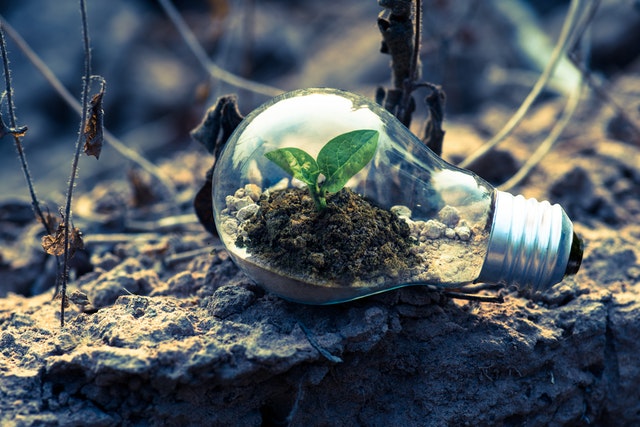
Change Your Light Bulbs
One of the simplest and most effective ways to reduce your carbon footprint is to switch to energy-efficient light bulbs. Just transitioning to LEDs can save tremendously; they last 12 times longer than conventional bulbs, use less electricity, and even if you run them 12 hours a day you can expect them to last as long as 11 years.
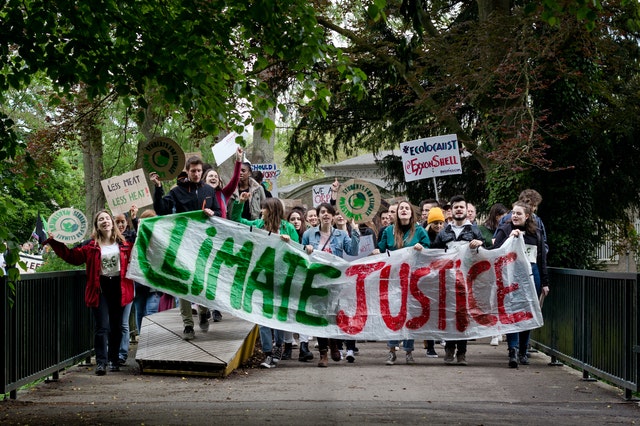
Photo by Vincent M.A. Janssen from Pexels
Broaden Your Efforts
Adjusting your homelife is a big challenge, but you can effect even bigger changes by engaging your community. Look to cities that have successfully addressed their carbon footprint and what qualities they offer — like sustainable energy sources, walkability and bikeability — and think about how you can bring about change in your own hometown. Whether it’s starting your own green business or encouraging your local government to promote change, being more actively climate-positive is sure to make a real impact that will ripple out to others.
Amanda Henderson enjoys raising awareness of a variety of important issues and sharing handy lifehacks through writing. On her Safe Children blog, she provides thoughts and resources on parenting and child safety. Article banner image by David McBee from Pexels.
The Italian Ministry of Environment, Land and Sea is hosting the #Youth4ClimateLive Series, in collaboration with Connect4Climate - World Bank Group and the Office of Secretary-General's Envoy on Youth, as part of the initiatives organized in the run-up to the 2021 Pre-COP26 in Milan, Italy and COP26.

In the biggest climate protest in history, an estimated 4 million people in over 150 countries and all 50 US states marched against climate change on September 20.
The September 2019 climate strikes saw students worldwide walk out of school to demand that governments take immediate action to solve climate change.
The protests were inspired by 16-year-old Swedish activist Greta Thunberg, who’s currently at the forefront of the global youth climate movement.
“I think climate activists like Greta Thunberg are just so incredible and so inspiring because [of] what she's doing and the incredibly radical way that she's doing it,” sophomore Camila Jongsma said.
While students around the world are marching for government action, others at PVHS are making an effort to reduce their environmental impact.
“I have been trying to reduce my carbon footprint by buying recyclable products only, by eating organic, and by eating less meat,” said sophomore Sophia Cuyler.
Additionally, Jongsma is vegetarian and bikes to school.

Greta Thunbeg at the UN Climate Action Summit.
In August 2018, Thunberg began skipping school on Fridays, holding a sign in front of the Swedish parliament that read “school strike for the climate.”
Her activism inspired major youth climate strikes worldwide in March and May of this year. Last month’s strikes took place from September 20-27 to coincide with UN climate conferences.
Thunberg addressed world leaders at the UN Climate Action Summit: “The eyes of all future generations are upon you. And if you choose to fail us I say we will never forgive you.”
LA native Slater Jewell-Kemker has special insight into the growing influence of the youth climate movement. At 15, she began filming other activists, following them around the world for more than 10 years. This culminated in her 2018 film, Youth Unstoppable.
“Our generation has had to grow up faster because our leaders have either refused to lead, or refused to acknowledge there is a problem,” Jewell-Kemker said. “So we have to step up and change the world ourselves.”
As someone who paved the way for Thunberg, Jewell-Kemker understands the immense pressure facing this new generation of youth climate activists.
“It's exhilarating but also a lot to bear, ” Jewell-Kemker said. “That's why this movement of young people that is exploding across the planet is so inspiring because we're not alone anymore.”

Slater Jewell-Kemker, director of Youth Unstoppable.
And the stakes couldn’t be higher.
“If human beings … do nothing to drastically cut our emissions and change the way we live, climate change will move beyond our control,” Jewell-Kemker said. “We are addressing the very mortality of our species.”
While individual efforts are crucial, Jewell-Kemker believes that only governments have the power to pass laws that will move us swiftly towards a carbon-neutral society. This is exactly what Thunberg and the youth climate movement are fighting for.
“As youth it's easy to believe we don't have this big voice in the Earth, but really it's completely opposite,” Jongsma said. “The climate strike marches … are demanding change, and the people in power know that we are not stopping until we get it.”
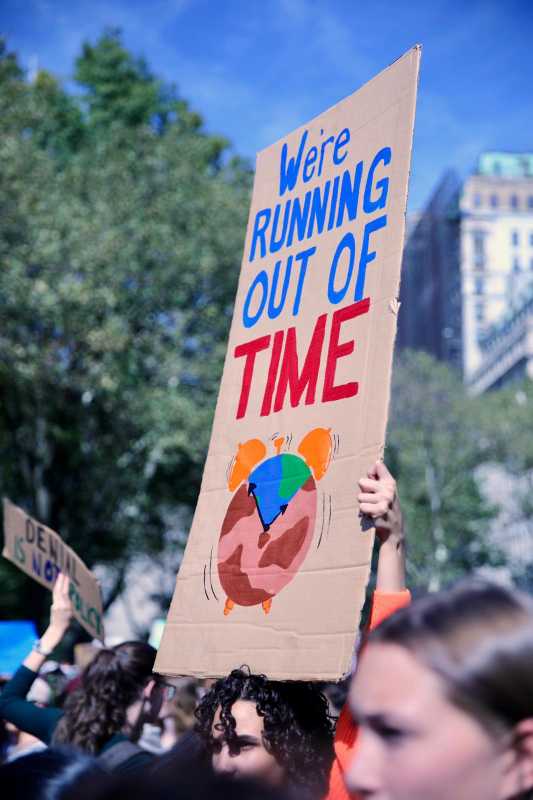
Students at a #SchoolStrike4Climate event in New York City.
This article originally appeared in The Point, Palos Verdes High School's campus newspaper. Color images courtesy of Kaia Rose and the Connect4Climate team. Black-and-white image courtesy of Slater Jewell-Kemker.
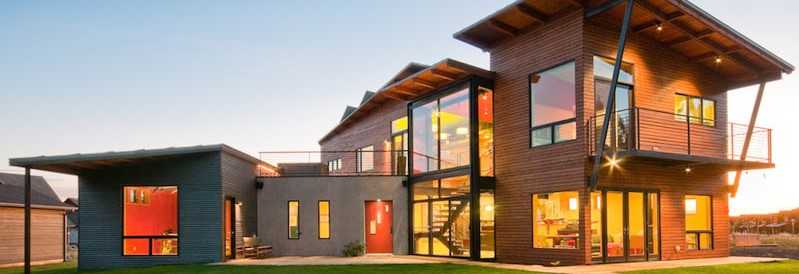
Sizing up the (Worthwhile) Challenge of Green Living
Green living entails more than just lifestyle adjustment; it is a mindset, and until you believe in what you are doing, you’ll never be able to fully follow through. Many decry the sacrifices or inconveniences associated with green living, but if you genuinely believe the lifestyle is the correct one for you, these sacrifices will not feel like sacrifices, and these inconveniences likewise.
Cultivating a green home is not easy, but once you have committed, you will reap many rewards—including significant financial savings as well as the hard-won feeling that you are doing your part to secure a sustainable future for your family and your planet.
Selecting a Site for Your Green Home
When deciding on a site for a green home, you will need to put in some research. If possible, choosing a home in close communion with the natural world can be a great first step. Properties with ample shade trees can make cutting back on heating and cooling costs easy, and properties with gardening space offer many exciting opportunities.
Keeping your roof out of the shade, however, will enable you to implement solar panels and pivot away from electricity from the power company. And if you’re interested in any form of wind power, make sure you select an area with favorable geography and frequently high wind velocity.
To cultivate your own fruits and veggies, you’ll need fertile ground. Determining the suitability of any given property to long-term green gardening can be trickier than you might think, so bringing an expert adviser aboard is a wise move.
You’ll also need to think about where you want your water to come from. Taking advantage of natural fountains and boreholes can be a viable strategy if you put in the time to pinpoint locations with readily accessible water.
Last but not least, try not to move too far from your workplace, especially if you travel to and from work by car. The pollution that comes with lengthy auto commutes every day will run counter to all the good you’re doing at home.
Building a Strong Foundation
When deciding on the foundation for a green home, bear in mind your heat retention needs. Materials like plywood and aluminum are slightly more expensive than others, but they can pay off in the long run in terms of saving you costs on heating.
Judicious use of precast concrete can prevent rainwater from breaching the house and can help guide rainwater on the property to a central location where you can make use of it. Insulating your basement against moisture is also a key step, as the costs of dealing with mold growth can be very dear.
What Materials Should You Consider for Your Roof and Walls?
If you’re not overly worried about your home getting too cold, recycled steel is a sturdy and modern choice that will protect the structure against strong winds and other forces no problem. Plant-based polyurethane foam can be used to help insulate the structure against the chill of winter.
Precast concrete is a tried and true option that is somewhat more eco-friendly than non-precast. As with recycled steel, you’ll find yourself paying extra for the eco-friendliness, but if you can manage the costs it will pay off in the long run.
Bamboo is a natural material with extremely high tensile strength and a bold look to boot. It is well-suited to windows—key for ventilating your green home—and does not require too much maintenance (though do be sure to have any sustainable woods in your home treated regularly to avoid pest issues).
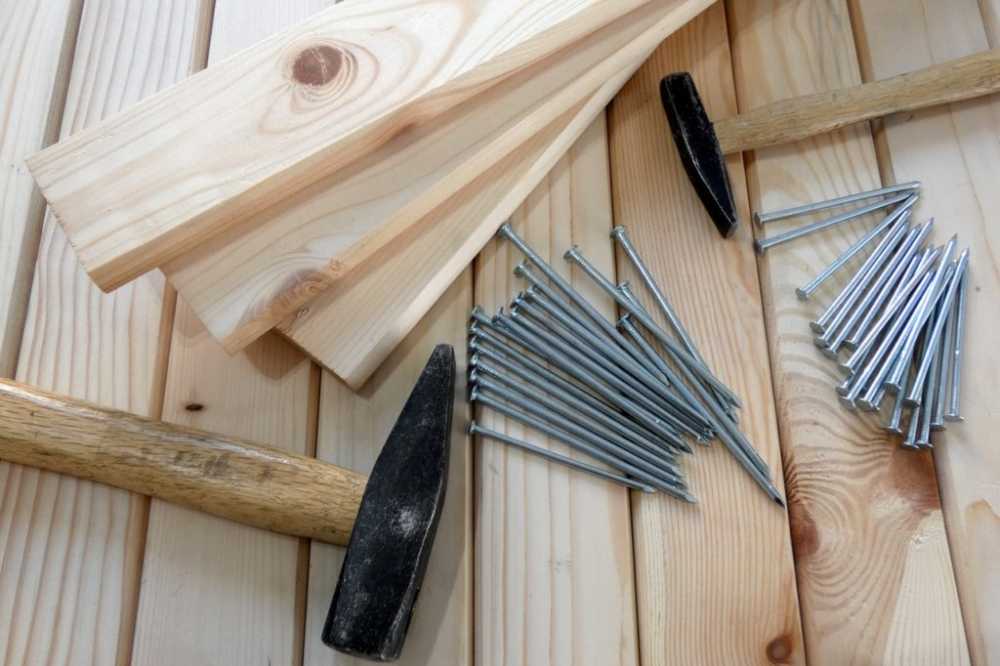
How Should You Use Your Rooftop Space?
The roof is an exciting place in a green home, offering many sustainable living options to homeowners.
If you ensure it gets regular exposure to direct sunlight, your roof can be a great place for a vegetable garden. It is also the ideal spot for solar panels, which can take in solar energy during the day that will be available to you at night.
Speaking of the sun, bear in mind that darker-colored roofs will retain much more heat than light-colored roofs. Bear the location of your home in mind when choosing a color to save on heating/cooling expenditures.
Installing a sunroof that can admit sun directly into the home when desired is another fine way to regulate the temperature in your green residence.
Living Sustainably
Getting your green home set up is only half the battle: green living is a mindset, remember, and you must hold on to this mindset once your new home is ready for action if you want the project to be a success.
If you chose the property with solar power and/or wind power in mind, be sure to follow through on implementing these technologies once you move in to capitalize fully on the advantages of the house. Raise as much of your own food as you can through gardening. You can use the leftover water from bathtubs and showers to help your plants grow, as well as collected rainwater.
If you’ve done all the hard work needed to create an eco-friendly home, you should have no problem seeking out Energy Star-certified sustainable appliances and LED lighting fixtures (where affordable). And be sure to compost and recycle what you can to cut back on waste!

Is Going Green Worth It?
The answer to this all depends on you, your beliefs, and your financial situation. If you believe passionately in sustainable living and looking out for the environment, think you can maintain this mentality moving forward, and have the money to create a green home from the ground up, why not?
It’s worth bearing in mind too that while this article details ways in which you can sculpt a green home from ground zero, the many tips and suggestions included here can also be applied in isolation if you lack the means or motivation to overhaul your current housing situation. Solar panels, rooftop gardens, rainwater management, etc. can all make for more sustainable living, regardless of whether you optimize every last thing.
At the end of the day, it’s up to you to decide how radical a change your looking for, and to make that change happen in the interest of the health of Mother Earth.
Images taken from Amanda Brown's original article.
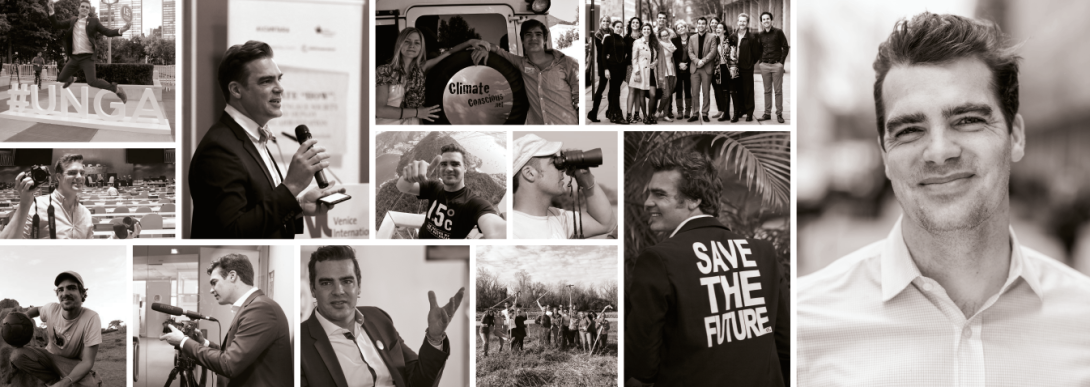
The World Bank Group and Connect4Climate will be holding a Remembrance for Max Thabiso Edkins, our dear friend and colleague whose life was taken away so tragically while en route to the UN Environment Assembly and One Planet Summit in Nairobi, Kenya.
The tribute will take place on May, 6th 2019, from 4 – 6pm (DC Time) at World Bank Group Headquarters. You can follow the live stream here:
[video:https://youtu.be/TKDMkwgTBwU]
To navigate to specific parts of the memorial program, please see a detailed timeline here.
[video:https://youtu.be/9LaSEEEK37A]
We are stepping up climate action! A message for ambition, of hope and with inspiration from the UN Climate Change Conference COP24 in Katowice, Poland. Hear from global leaders, thinkers, activists and influencers why they are stepping up climate action to accelerate the transition to a decarbonized and resilient world.
